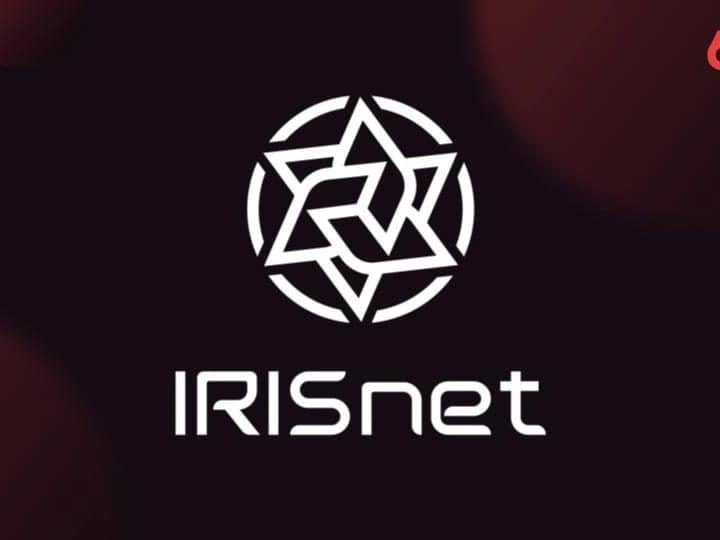Subscribe to wiki
Share wiki
Bookmark
IRIS Network
The Agent Tokenization Platform (ATP):Build autonomous agents with the Agent Development Kit (ADK)
IRIS Network
IRIS Network was created to be the foundation for next-generation decentralized application. IRISnet is built with the SDK, IRIS Hub thus allowing cross-chain interoperability through a combined service model.[1][2]
Overview
IRISnet is a service infrastructure and protocol built using the Cosmos SDK and Tendermint consensus layer. Focusing on being one of the first regional Cosmos network hubs outside of the Cosmos Hub, the IRIS Hub, an independent Proof-of-stake (PoS) blockchain, will serve as the "center" of the IRIS network that will connect the other zones within the IRIS network both to each other and to the greater Cosmos ecosystem. IRISnet's service infrastructure and modules for adjacent zones will aim to support DeFi applications. While also providing multiple modules to support DeFi applications, IRIS is fashioned to support the consumption of computer data and resources through various system mechanisms, token economics, and internet token transfer of blockchains.[3][4]
History
IRISnet was created by the technology team of Bianjie Intelligent Technology Co., Ltd. (Bianjie AI). Bianjie Intelligent Technology Co., Ltd. (Bianjie AI), the company behind IRISnet, was founded in 2016. This Shanghai-based start-up focuses on developing blockchain-based products and solutions for enterprises, specifically in the healthcare and financial industries. IRISnet, being the first regional hub in the Cosmos ecosystem outside of the Cosmos Hub, focuses on providing infrastructure and protocols for decentralized business applications.
IRISnet is a vital partner of the Interchain Foundation and Tendermint (the company), who are the core contributors behind the Cosmos Network. Starting as a Hub, IRISnet was potentially built to be the first hub to interoperate with the Cosmos Hub and the independent chains (called zones) connected to it.[5]
IRISnet's Team
The IRIS Network is the product of a collaboration between several blockchain businesses which includes
- Tendermint, Wancloud, and Bianjie AI. Tendermint provides technical supervision and development support to the IRIS network team. Wancloud acts as a vital partner to develop the IRIS Network ecosystem. Some of the core team members of IRISnet came from all three organizations. One of which is Haifeng who is the co-founder of the IRISnet project. He holds an M.S. in ECE from the University of Maryland. Haifeng worked as CTO for the Wanxiang Blockchain Wancloud before starting the IRISnet project. Another Core member is Harriet Cao . A co-founder of the IRISnet project who also is co-founder of Bianjie, the core development team of IRISnet. Other of IRISnet's core members are Jeffrey Hu and Jae Kwon.
Tokenomics
Similar to the Cosmos network, the IRIS network is also designed to support a multi-token model. These tokens are owned by different partitions and can be transferred from one partition to another through the IRIS hub. We have constructed two types of tokens to support operations on the IRIS network:
- Equity token
- Cost pass
IRIS is the native token of the mainnet IRIS Hub, the equity token of Bonded Proof-of-stake (BPoS) staking, and the fee token for network transactions, DeFi business, and iService cross-chain services. It is a utility token with multiple usage scenarios (Utility Token). IRIS token is the main means of exchanging value among users. The token is used for both staking and paying. The token also provides voting rights to participate in network administration.[6]
How to buy IRIS
Buying and trading IRIS, the native token of IRISnet is great but understanding how to trade with it and from where to trade, makes trading safe. The following steps inform users on how to buy IRIS
- Accessing a Secure Trading Platform- Users will need to buy any of the major cryptocurrencies (BTC or ETH).
- Transferring Funds To An Exchange: Users will need to send their chosen cryptocurrency (which could be Bitcoin or Ethereum) to an exchange. All exchanges have a similar deposit method. IRISnet (IRIS) is available on Binance. And users are to ensure that they select the correct coin the user will want to deposit. BTC should be sent to a BTC deposit address, etc.
- Spotting IRIS- Once the user's deposit is confirmed, trading can begin having accessed the funds. To purchase IRISnet (IRIS) on Binance, users will need to check through the “Exchange” tab and click on “Basic”. To locate IRISnet (IRIS), type the coins “ticker” (IRIS). Users must ensure that the correct pairing is being selected. Then Click on “IRIS/BTC” to proceed.
- Buying IRIS- Having spotted IRISnet (IRIS), users will be presented with a Price Chart (Center) and some Order Books (Left). The “Price” field will be automatically filled with the most recent price IRISnet (IRIS) was sold for although this can be adjusted to the user's desired price. The “Amount” field is the amount of IRIS the user wishes to purchase. The “Total” field is the total price in BTC that users will pay for the whole amount. Then proceed click “Buy IRIS”. The user's order will be filled if a Seller sells IRIS for the price submitted.
- Withdrawing IRIS- To withdraw IRIS, Users will need to click on "withdrawals" around the "Funds” tab. Users are to Locate IRISnet (IRIS) by using the drop-down box provided and then enter the amount of IRIS that is to be withdrawn, taking into account the fees/minimums shown and ensuring that the withdrawal address inputted is correct and it is the user's address. By clicking “Submit”, the user is done with purchasing IRIS.[7]
Partners
IRISnet is supported by the following partners:
| Partners | Names of Organization |
|---|---|
| Core development team | Bianjie Intelligent Technology, Tendermint |
| Strategic Partners | Interchain Foundation, Hashkey Digital Asset Group, PlatON |
| Ecological partners | OKChain, MYKEY, KAVA, e-Money, IOV, Coirfan |
| Support organization | AMINOcapital, Bibox, Huobi Capital, MediShares, BK Fund..etc. |
See something wrong?
The Agent Tokenization Platform (ATP):Build autonomous agents with the Agent Development Kit (ADK)
